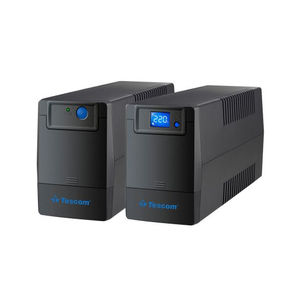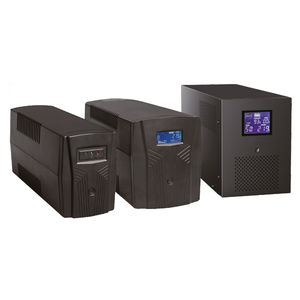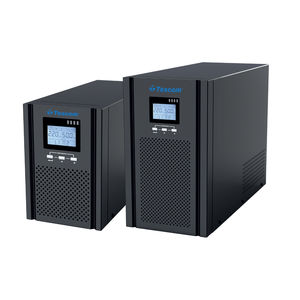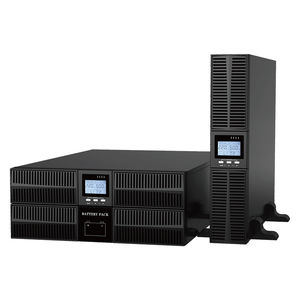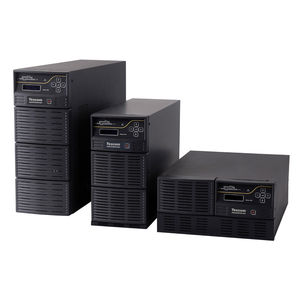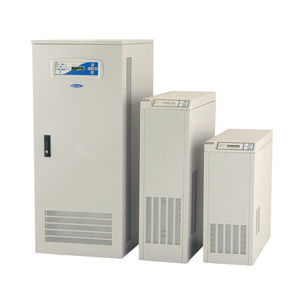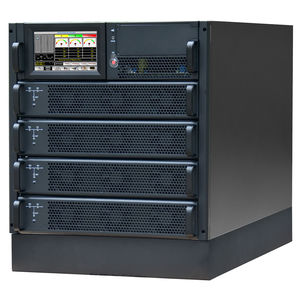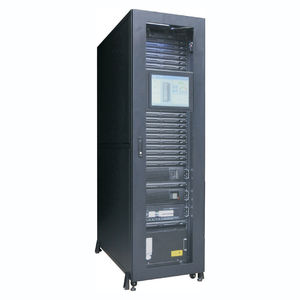
Double-conversion uninterruptible power supply TEOS 100single-phaseACwith LCD display
Add to favorites
Compare this product
Characteristics
- Type
- double-conversion
- Electrical characteristics
- single-phase, AC
- Other characteristics
- with LCD display, emergency, Eco mode, frequency, adjustable
- Certifications
- ISO, CE
- Output power kVA
1 kVA, 2 kVA, 3 kVA, 6 kVA, 10 kVA
(1.359621 hp, 2.719242 hp, 4.078863 hp, 8.157727 hp, 13.596212 hp)- Input voltage
Max.: 300 V
Min.: 60 V
- Output voltage
Max.: 240 V
Min.: 100 V
- Power
900 W, 1,800 W, 2,700 W, 5,400 W, 9,000 W
Description
TEOS 100 Online UPS is a microprocessor controlled uninterruptible power supply with true double conversion technology. It is efficient with output power factor 0.9 and input power factor correction. Thanks to its silent operation, it is especially preferred for use in home and office applications. It offers flexibility of use with its prominent features such as frequency converter mode, wide voltage/frequency range and multiple communication options.
GENERAL SPECIFICATIONS
True double-conversion
Microprocessor control optimizes reliability
Input power factor correction
Output power factor 0.9
Wide input voltage
Converter mode available
ECO mode for energy saving (Only available for 1-3kVA models)
Generator compatible
Adjustable battery numbers only available for 6/10kVA models
Adjustable charging current via LCD or soſtware (1A~ 6A) only available for 6/10kVA models
Emergency power off (EPO) function is only available for 6/10kVA models
Comprehensive display allows easy monitoring and access to UPS status
Related Searches
- On-line uninterruptible power supply
- AC uninterruptible power supply
- Industrial uninterruptible power supply
- Three-phase uninterruptible power supply
- UPS with LCD display
- Single-phase UPS
- Sine wave inverter
- IEC uninterruptible power supply
- Data center uninterruptible power supply
- Eco mode uninterruptible power supply
- Pure sine wave inverter
- Network uninterruptible power supply
- Compact uninterruptible power supply
- Three-phase inverter
- Parallel uninterruptible power supply
- Lead UPS
- Double-conversion UPS
- Inverter for industrial applications
- Medical uninterruptible power supply
- CE uninterruptible power supply
*Prices are pre-tax. They exclude delivery charges and customs duties and do not include additional charges for installation or activation options. Prices are indicative only and may vary by country, with changes to the cost of raw materials and exchange rates.






